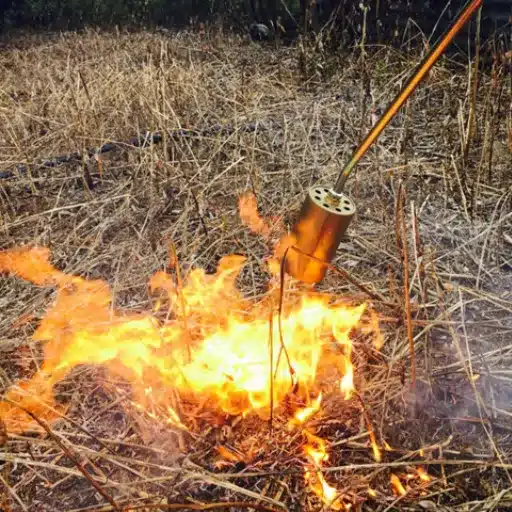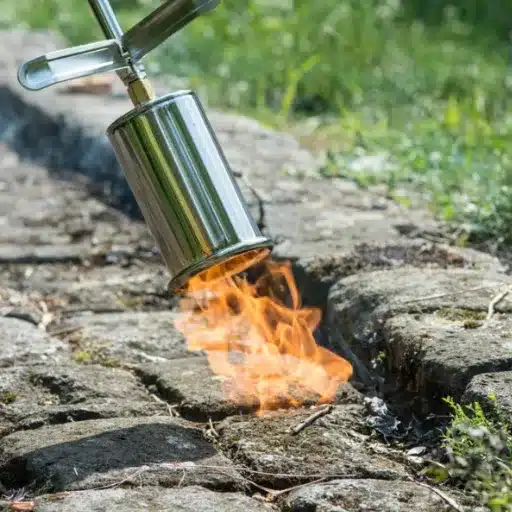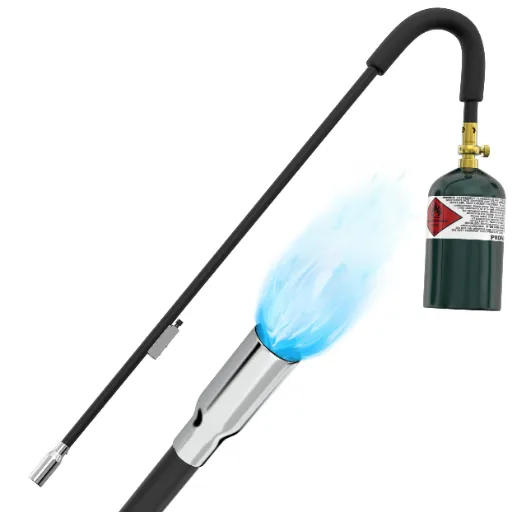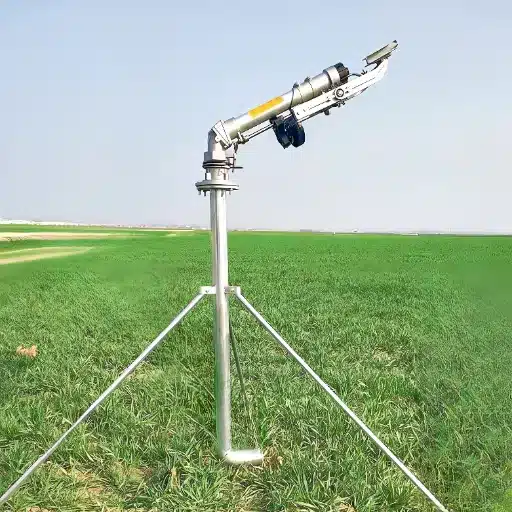If there is anything that can provide convenient access to fresh and affordable ice, it is the Kooler Ice machines, which have revolutionized the ice vending industry. Ice vending machines are a truly profitable option if you want to become a budding entrepreneur or add another facet to an existing business. So, coming to this point, how much does a Kooler Ice machine cost, and why are these machines gaining ground on both vendors and buyers? This blog post aims to explain the underlying factors that determine the price of Kooler Ice machines, investigate what they offer, and determine whether these are the answers to your investment needs. Stay tuned for key information about ice vending machines and how you can integrate them into your entrepreneurial goals.
Understanding Kooler Ice Vending Machines

Kooler Ice vending machines represent an advanced self-service option that enables clients to purchase fresh, filtered ice directly from the machine. With an emphasis on being efficient, low maintenance, and reliable, these machines have become a business owner’s power engineering to garner steady, passive income. The advanced filtration and dispensing systems utilize technology to produce clean and pure ice. These machines are often installed in high-traffic locations, increasing consumer convenience and creating revenue-generation opportunities for vendors. This synergy of being simple, well-made, and accessible has been a big selling point to the masses.
What is a Kooler Ice Machine?
The Kooler Ice machine is a self-serve vending setup designed for ice and water, offering a convenient method to provide good, clean ice and water in high-traffic areas.
Features of Kooler Ice Vending Machines
Equipped with superior technology, Kooler Ice vending machines aim to provide a dependable, efficient, and user-friendly experience. A few of the machine’s distinct features are:
- Advanced Filtration System
In Kooler Ice machines, one finds a sound water filtration system, ensuring that the ice and water produced are clean, fresh, and safe for human consumption. The advanced filtration process removes impurities, thereby ensuring that such water either complies with or exceeds prescribed health and safety standards.
- Energy Efficiency
Yet less power consumption is another feature they are aiming for when they are designed, without compromising on peak efficiency. Kooler Ice machines further promote energy savings by utilizing components such as LED lighting and energy-efficient compressors, thereby minimizing their operational carbon footprint.
- Touch-Free Dispensing Solutions
Some varieties offer touch-free dispensing options, allowing customers to access ice and water without physical contact with the machine. It increases hygienic and safety factors in busy environments.
- Very High Production Capacities
Kooler Ice machines have very high production rates, with some models producing as much as 1,000–2,000 pounds of ice per day; hence, they are well-suited for placement in busy sites where demand is typically high.
- Remote Monitoring Technology
The intelligent control system of Kooler Ice machines enables operators to view and remotely control operating conditions and stock levels. Quick machine failure analysis, restoration, and inventory management, facilitated by real-time access to platform data, significantly reduce downtime, as well as maintenance and repair times.
- Customizable Branding Options
The Kooler Ice machine offers customizable wraps and branding options, allowing project owners to increase the machine’s visibility and either better integrate it into their environment or promote their logo.
- Payment System User-Friendly
In addition to accepting cash payments and credit and debit cards, the machines allow customers to pay via mobile payment systems. This enables a broad range of customers to conduct transactions conveniently and effortlessly.
- Durable & Weather-Resistant Design
These machines are constructed from durable, rust-resistant materials that make them weatherproof, thus enhancing their suitability for placement both indoors and outdoors.
Supporting Data
- Production Efficiency: The average Kooler Ice vending machine is capable of producing and storing enough ice for several hundred customers, making Kooler Ice a natural choice in areas with high demand.
- Cost Savings: Based on energy consumption factors, Kooler Ice systems can consume up to 33% less electricity compared to older vending technologies, thereby directly increasing the profitability of operators.
- Customer Convenience: According to customer surveys, contactless and flexible payment options rank among the top features that consumers appreciate, influencing repeat purchases in nearly 85% of cases.
Such carefully designed features have made Kooler Ice machines the number one choice for entrepreneurs seeking to elevate the service level of ice and water to their community, with potential for revenue generation.
Benefits of Using Ice Vending Machines
|
Key Point |
Description |
|---|---|
|
High Profit Margins |
Low production cost, high selling price. |
|
Meeting Demand |
Continuous ice production, no delivery delays. |
|
Eliminates Theft |
Customers pay before receiving ice. |
|
Space-Saving |
Compact size, frees up store space. |
|
Low Maintenance |
Minimal moving parts, easy to maintain. |
|
24/7 Operation |
Generates revenue round-the-clock. |
|
Eco-Friendly |
Reduces plastic waste and energy use. |
|
Convenient for Customers |
Quick, self-service access to fresh ice. |
|
Attracts New Customers |
Draws traffic to businesses and marinas. |
|
Supports Local Economy |
Owned by local individuals, keeps money in the community. |
|
Quality Control |
Freshly made ice, no contamination risks. |
|
Additional Revenue Stream |
Adds a passive income source for businesses. |
|
Custom Branding |
Machines can be tailored to match business branding. |
|
Streamlines Operations |
Reduces employee workload and theft risks. |
|
Energy Efficient |
Consumes less energy than traditional ice production and delivery methods. |
Cost Analysis of Kooler Ice Machines

Considering that Kooler Ice machines generally cost somewhere between $ 20,000 and $ 50,000, according to model and features, the initial amount might very well create a bit of awe. However, the machines are built for maximum long-term durability and efficiency, thereby reducing maintenance costs over the years. From the perspective of many operators, a couple of years is sufficient to recoup their investments due to steady revenue and low maintenance expenses. Location, pricing of the product, and foot traffic from potential customers are all aspects of profitability, and so making the right choice in placement can optimize yields.
Initial Purchase Price of Kooler Ice Machines
Kooler Ice vending machines are priced between $20,000 and $50,000 for the base model, depending on the type and functions already integrated within the unit.
Factors Influencing the Cost
Several key factors contribute to the overall price of Kooler Ice machines. Significant factors are explained in-depth below:
- Machine Model and Features
The precise model and the features that it carries generally decide how much it will be charged for. These new advanced designs have much greater production capacities or any further amenities of remote monitoring, credit card payment, etc., would certainly carry a higher price tag.
- Production Capacity
However, machines that can produce significant quantities of ice generally cost more. High-demand sites for such machines would require higher storage capacities and faster ice-making rates, all of which would result in a higher price.
- Technology Add-ons
Optional technology upgrades could include features such as mobile app integration or self-cleaning systems, which would make the machines more expensive.This is one of those features worthy of the premium tag as they add a little more value in convenience and efficiency.
- Delivery and Installation Costs
Delivery and installation may vary, depending on the location and accessibility. For remote areas or installations, surcharges may apply.
- Warranty and Maintenance Packages
Extended warranty or prepaid maintenance programs for long-term care may increase the initial investment, but they certainly will provide peace of mind while reducing future costs.
A comprehensive understanding of these factors clarifies the buyer’s perspective on selecting the appropriate machine to meet their needs and budget, taking into account eventual profitability.
Comparative Costs of New vs. Used Kooler Ice Machines
|
Aspect |
New Kooler Ice Machine |
Used Kooler Ice Machine |
|---|---|---|
|
Price Range |
$20,000 – $100,000+ |
$10,000 – $50,000 |
|
Condition |
Brand new, no prior use |
Varies by age and maintenance |
|
Technology |
Latest features, advanced tech |
May lack modern features |
|
Warranty |
Full manufacturer warranty |
Limited or no warranty |
|
Reliability |
High, minimal failures |
Depends on condition |
|
Maintenance Needs |
Low in initial years |
Moderate to high |
|
Customization Options |
Available before delivery |
Limited, sold as-is |
|
Availability |
Longer lead time (4–8 weeks) |
Immediate, if in stock |
|
Resale Value |
Higher resale potential |
Lower resale value |
|
Included Features |
Full package (sensors, payment) |
May lack some components |
|
Installation Costs |
Often included by the manufacturer |
May require third-party setup |
|
Ideal For |
Long-term, high-traffic sites |
Budget-conscious, low-traffic |
Operating Costs and Maintenance

The study of Kooler Ice machines never ends, with the demands of operating costs and maintenance considered, bestowing prudence upon considerable amounts of profit.
Operating Costs
Primary operating costs are related to energy consumption, water use, and supplies for upkeep, such as replacement parts and cleaning agents. Typical energy consumption in commercial ice machines ranges from 350 to 800 kWh per month, depending on the model and output capacity. Kooler Ice high-efficiency machines tend to operate in an energy-conservative manner, thus saving a considerable amount in utility bills each month. Meanwhile, water consumption also varies by machines; for instance, most ice makers require between 12 and 30 gallons of water to produce 100 pounds of ice. Energy-efficient machines of the ENERGY STAR standard could reduce up to 15–20% in average energy and water consumption compared to older models.
Maintenance Costs
Another important consideration affecting the total cost of ownership is routine maintenance. With cleanings recommended at least every six months to maintain sanitary conditions and ensure the efficient operation of the machine, it is present. A cleaning DIY kit is often priced between $20 and $50, whereas a professional may charge anywhere from $150 to $400, depending on the intricacy of the maintenance. Then, there are items like air filters and water filters, which also need to be replaced regularly, costing approximately $50 to $150 per machine annually in most cases.
Cost Comparisons for Used Units
The oceans completely separate new, recently purchased Kooler Ice machines from those that are secondhand and, therefore, much cheaper. The maintenance costs are usually very high, however, due to possible wear or other damage. The used machines may require servicing or component replacement immediately, adding another $300–$800 to the initial purchase price. Hence, buying used machines usually entails some level of risk concerning unexpected costs, and thorough inspections for damages must be conducted, as well as questioning the previous maintenance records.
By integrating efficient operating technologies and adhering to regular maintenance schedules, businesses can significantly optimize both performance and costs over the lifespan of their Kooler Ice machine. Proper planning allows buyers to manage ongoing expenses effectively and ensure their ice production meets demand reliably.
Ongoing Expenses for Kooler Ice Vending Machines
The operating costs of Kooler Ice vending machines typically include electricity, water, routine maintenance, replacement parts, and software upgrades necessary to maintain peak performance and reliability.
Maintenance Tips to Increase Service Life
This maintenance guide proposes infrastructural matters directly related to the ice machine, including development of efficiency, servicing extensions, etc. Try to follow these tips to help maintain ice production in perfect working condition for many years:
- Lean Water Filters Regularly
Clean or replace water filters every three to six months to prevent clogging and maintain acceptable water flow. If filters become clogged, they can impede the system’s operation and reduce the effectiveness of ice production.
- Check and Clean Condenser Coils
Once per month, check the condenser coils for accumulation of dust and debris. Then, apply either a soft brush or compressed air to clean the coils properly. Dirty coils reduce cooling efficiency and increase energy consumption, as a significant amount of power is required to cool.
- Descaling Any Time
Hard water deposits minerals in the machine’s working components. Descalve every 3-4 months to prevent clogging, using whichever solution the manufacturer advises.
- Replace Worn and Damaged Parts
Occasionally, inspect the machine for worn or damaged items, such as belts, seals, and gaskets, to prevent more significant issues from developing and reduce downtime.
- Update the Software and Firmware
Update the machine software and firmware to the latest versions supplied by the manufacturer. Updates often contain performance optimization and bug fixes that help improve reliability and efficiency.
Cost Benefits of Regular Maintenance
Each time maintenance is performed, cost savings support smooth operational efficiency. The five benefits are elaborated upon here:
Lower Repair Costs
Maintenance goes a long way in avoiding costly emergency repairs by allowing for the timely detection and rectification of problems. Industry sources claim emergency repairs can be reduced by as much as 30% through preventive maintenance measures.
Longer Life Span
Through proper maintenance, a piece of equipment operates slowly and steadily, and such equipment lasts longer. They do not get replaced very quickly. Regular maintenance can extend equipment life by 20-40%.
Energy Efficiency
Well-maintained machines tend to consume less energy, which consequently reduces operational costs. A thorough cleaning and optimization, for example, can help reduce energy consumption by up to 15%.
More Time to Run!
Unexpected breakdowns are reasonably well prevented if routine maintenance is followed, so there is little chance for interruptions to get in the way of production. This interruption saves the company thousands of dollars every year in lost production.
Better Resale Value
Regular maintenance preserves the equipment’s value to some extent, thus avoiding a bad resale price when upgrading to a new model. Well-maintained equipment with proper maintenance records can increase resale value by about 10-20%.
Investment Opportunities in Ice Vending

Ice vending is a low-barrier, high-return opportunity in an essential industry. Ice vending machines require relatively low initial investments, depending on what one considers a high capital investment, and these machines continue to generate consistent returns due to the persistent demand for ice. They operate around the clock with minimal labor required to maintain them, as they are automated and self-service. There are environmental benefits as, to some extent, these ice vending businesses have a low environmental impact, which is of growing concern to consumers. With proper location selection and regular maintenance schedules, ice vending can provide a steady passive income for many years.
Benefits of Investing in Ice Vending Machines
In raising the funds for an ice vending machine, many entrepreneurs believe this is a prime opportunity to generate passive income. The ice vending industry generates approximately $835 million annually in the United States, a result of growing consumer demand for convenience and sustainability. These machines require a small upfront investment compared to almost anything else available. Typically, a single machine can cost between $20,000 and $50,000, depending on the brand and type of features offered. Kooler Ice, Everest Ice, and Ice House America are some of the biggest ice-vending-machine-making companies.
Key Features of Ice Vending Machines
How does ice vending work? Modern-day ice vending machines are fully automated, allowing them to operate 24 hours a day with minimal supervision, thereby substantially reducing labor costs. All they require is periodic maintenance, such as a filter change every quarter and machine cleaning, which results in lower running costs. Moreover, these machines are designed with energy efficiency in mind, requiring lower amounts of water and electricity, thereby conserving the environment. For instance, the meltwater is often recycled by many ice vending machines, allowing it to be used for making ice.
Profitability and ROI
After strategic planning in terms of locations, such as areas near convenience stores, gas stations, or any other high-traffic commercial zone, significant returns can be achieved. Typically, an ice vending machine can generate between $3,000 and $6,000 per month, depending on the area’s foot traffic and the prices set for ice. Operating costs, such as water, power, and maintenance, could all come to under $800 a month, with a margin for profit. A portion of investors have reported recouping the initial investment within a span of 12 to 18 months.
Sustainable Business Model
With its renewed focus on issues of sustainability, ice vending businesses hold a promising position in the green market. The machines contribute to a reduction in plastic waste where the consumer brings their container or, in some instances, buys ready containers made from biodegradable materials from the machines. With consumer trends pointing to eco-friendly solutions, such an industry is supposed to be future-proof.
The Final Thought
Ice vending machine investment is in the intersection of low operating requirements and high-profit potential. Given the correct location, through proper maintenance, and by leveraging consumer convenience trends and sustainability, this line of investment would find a place as a versatile source of pleasant passive income and a profitable return on investment. Before investing in an ice vending machine, it is essential to conduct thorough research and on-site evaluation of local markets, understand compliance and permitting procedures, and undertake due diligence on various machines to ensure success.
Profit Potential with Kooler Ice Machines
Investing in Kooler Ice Machines creates numerous opportunities for generating profit due to their efficient operation and steady consumer demand for ice. Here are five things and facts that give a high-level view of the profit potential:
Low Overhead Costs
Kooler Ice Machines do not require labor and offer extremely low utility costs; hence, they are among the more cost-effective business options.
Strong Daily Revenue Potential
It depends on the location and demand: a Kooler Ice Machine earns $150 to $200 in daily revenues.
High Return on Investment (ROI)
When run consistently, many operators have reported ROI between 12 and 24 months from installation.
Access for Customers 24 / 7
With the machines working around the clock, customers can purchase ice at any time, therefore maximizing sales opportunities.
Eco-Friendly and Sustainable
Kooler Ice Machines incorporates ingenious technology to reduce water and energy waste, making it an excellent choice for consumers who want to support green companies.
Seize these aspects and strategically position your Kooler Ice Machine with the help of these five profit points, as Kooler Ice Machines indeed have impressive profit potential.
How to Sell Ice Effectively
Selling ice can be a profitable and easy business; its success lies in understanding customer needs, selecting the correct location, and utilizing effective marketing strategies. A fusion of practical methods with data would serve to augment sales and foster the growth of your ice vending enterprise.
- Choose High-Traffic Locations
The profitability of an ice machine is also related to its location. Locations where the demand for ice has traditionally been high include gas stations, convenience stores, campgrounds, marinas, and construction sites, which are always bustling with customers needing ice. According to a report released at the end of the year, ice vending machines installed in the most populated or heavily trafficked areas generate annual sales of anywhere from $20,000 to $50,000 per machine.
- Leverage Competitive Pricing
Competitive prices could entice customers. Check local prices for ice in your area and price fairly, with the advantage that your customers can purchase from a convenient machine. For example, bulk discounting promotions such as “Buy two bags, get one free” further entice repeat buying and foster loyalty. Research indicates that 70% of buyers would return to places that give them reasonable offers.
- Emphasize Eco-Friendliness
These consumers are more aware of sustainability, and a green initiative would give your business the needed edge. With Kooler Ice Machines’ latest application of water and energy efficiency, your environmental footprint diminishes even further, while you have also gained a loyal following of environmentally conscious consumers. Adopting an eco-friendly stance can actually increase your brand equity and attract more customers, as 81% of global consumers now want to buy from businesses that strive for sustainability.
- Engage in Local Marketing
Advertising stoking attention while creating steady awareness for customer patronage. Take advantage of Facebook and Instagram to promote your ice vending machines, share your customer experiences so far, and inform the public about where they can find you. Creating working grounds for mutual interest could be highly advantageous by partnering with others, such as a restaurant or a shop that sells fishing lures. Reports indicate that 74% of small businesses believe social media is a significant contributor to customer engagement.
- Attend to Maintenance and Availability
Trust lost to an embarrassing poster of a non-functional machine results in a direct loss of sales. Perform regular maintenance on your ice machine to ensure smooth operation. And ensure ample availability of your machine on demand, during peak summer when ice sales may peak. According to industry analysis reports, sales of ice can increase by up to 30% in warm weather, highlighting the importance of preparing for these seasonal contingencies.
Mix strategic locations, competitive prices, eco-friendly technology, enormous marketing power, and you have a recipe for a healthy and prosperous ice vending business. Continuously review performance reviews and customer feedback to adjust strategies in response to their changing needs.
Conclusion: Making an Informed Purchase

When purchasing an ice vending machine, it is crucial to consider the factors that impact your business. The first consideration should be whether your machine will be reliable and efficient. Your machine should be able to produce enough ice to meet demands without requiring heavy maintenance. Additionally, ensure the machine is designed to be environmentally friendly and energy-efficient, thereby lowering running costs and attracting climate-conscious customers. Lastly, compare price alternatives, taking into account both the initial cost and long-term profitability. If you prioritize these factors and conduct thorough research, you will never go wrong in making a confident, well-informed decision that supports sustainable business growth.
Assessing Your Needs for Quality Hydration
Taking armchair analysis of quality hydration needs, I would first like to establish those daily water servings that my target clientele might require. Next, it would be advisable to discuss the preferred water quality: filtered or mineralized, depending on their taste. Further considerations would include the machine’s capacity and functionalities, ensuring it is suitable for both present and future requirements, and conveniently fits within the set budget.
Finding the Right Vending Machine for Sale
When considering the right vending machine, there are several important factors to consider to ensure your purchase perfectly suits your requirements. First, you must decide now which type of vending machine you require. It could be a beverage vending machine, vending for snacks, or combo vending machines that attend to various product needs. According to recent statistics, combo delivery machines are in increasing demand due to the flexibility they offer, with studies revealing a 20% growth in preference for these over single-use devices.
Thereafter comes machine technology and features that should be designed into it. Modern vending machines typically accept cashless payments, often via credit card readers, but today, most also offer mobile wallet cashless payments, which customers are increasingly expecting. Research shows that 70% of the transactions processed by machines today involve some form of cashless payment; if there is one key concern machine operators should apprehend to improve customer experience and generate revenue, that is it!
When it comes to energy efficiency, there is no compromise. Registering an Energy Star rating means vending suppliers have saved up to 35% of their operating costs compared to conventional models. Furthermore, installing a vending machine with a bright stock level-tracking system will enable remote monitoring of stock levels and sales, thereby saving time and facilitating the optimization of scheduled restocks.
Finally, prices should be given due consideration. Newer top-of-the-line machines with all the needed features sell for anywhere between $3,000 and $8,000. For those with a more budget-conscious approach, refurbished machines often prove to be a fair bargain, with prices that can be 25-50% lower than new ones, while maintaining little compromise on working condition. Oh, and when buying, could you please check on the warranty and after-sales service? They might just be the last bit that will give you long-term value for your vending machine.
By weighing all these considerations and staying informed about new developments in the industry, you will feel confident in selecting the vending machine that best serves your business interests and consumer needs.
Final Thoughts on Kooler Ice Machine Cost
This is, in essence, the conviction from my side that the inordinate cost of a Kooler Ice machine is worth the investment, provided, of course, that it fits in with your business proceedings and budget. When weighed against factors such as initial purchase price, operating costs, and revenue potential, these machines offer significant environmental value. It is advisable to consider these issues and determine whether they align with one’s own needs.
References
-
“Ice machines: choosing the right ice-maker for the job improves a processor’s profits and product”
- This article examines the costs and efficiencies of various types of ice machines, offering relevant insights.
- Source
-
“Measurement and modelling of ice rink heat loads”
- This research provides data on energy consumption and costs related to ice production, which might apply to Kooler Ice machines.
- Source
-
“Mechanical ice drilling technology”
- This paper examines the technological and cost implications of ice-related machinery, providing a broader context for understanding ice machine costs.
- Source
Frequently Asked Questions (FAQ)
What is the average cost of a Kooler ice machine?
The average cost of a Kooler ice machine typically ranges from $200 to $800, depending on the size, features, and production capacity. Smaller countertop models are generally more affordable, while larger commercial units tend to be on the higher end of the price spectrum.
Are there any additional costs associated with purchasing a Kooler ice machine?
Yes, in addition to the initial purchase price, there may be additional costs such as installation fees, maintenance, and replacement parts. It’s also important to consider the cost of electricity and water usage, as these can affect the overall operating expenses.
What factors influence the cost of a Kooler ice machine?
The cost of a Kooler ice machine is influenced by several factors, including its production capacity, ice type (such as nugget or cube), brand reputation, and additional features like built-in water filters or self-cleaning mechanisms. Larger machines designed for commercial use tend to be more expensive than those used in residential settings.
How long can I expect a Kooler ice machine to last?
With proper maintenance, a Kooler ice machine can last anywhere from 5 to 10 years. Regular cleaning, servicing, and using quality water can extend its lifespan and ensure optimal performance throughout its use.
Do Kooler ice machines come with a warranty?
Most Kooler ice machines come with a manufacturer’s warranty that typically covers parts and labor for a specific period, often ranging from one to three years. It’s advisable to check the specific warranty terms when purchasing.
Where can I buy a Kooler ice machine?
Kooler ice machines can be purchased at various retail outlets, including home improvement stores, specialty kitchen appliance retailers, and online marketplaces like Amazon or eBay. It’s helpful to compare prices and read customer reviews before making a purchase.
Are Kooler ice machines energy efficient?
Many Kooler ice machines are designed to be energy efficient, using less electricity compared to older models. Look for machines with Energy Star ratings, which indicate that they meet energy efficiency guidelines set by the U.S. Environmental Protection Agency.
Can I use a Kooler ice machine for home parties?
Absolutely! Kooler ice machines are ideal for home parties, as they can produce a large quantity of ice quickly, ensuring your guests have plenty of ice for drinks and other purposes. Just ensure that you choose a model that meets your specific ice production needs.









